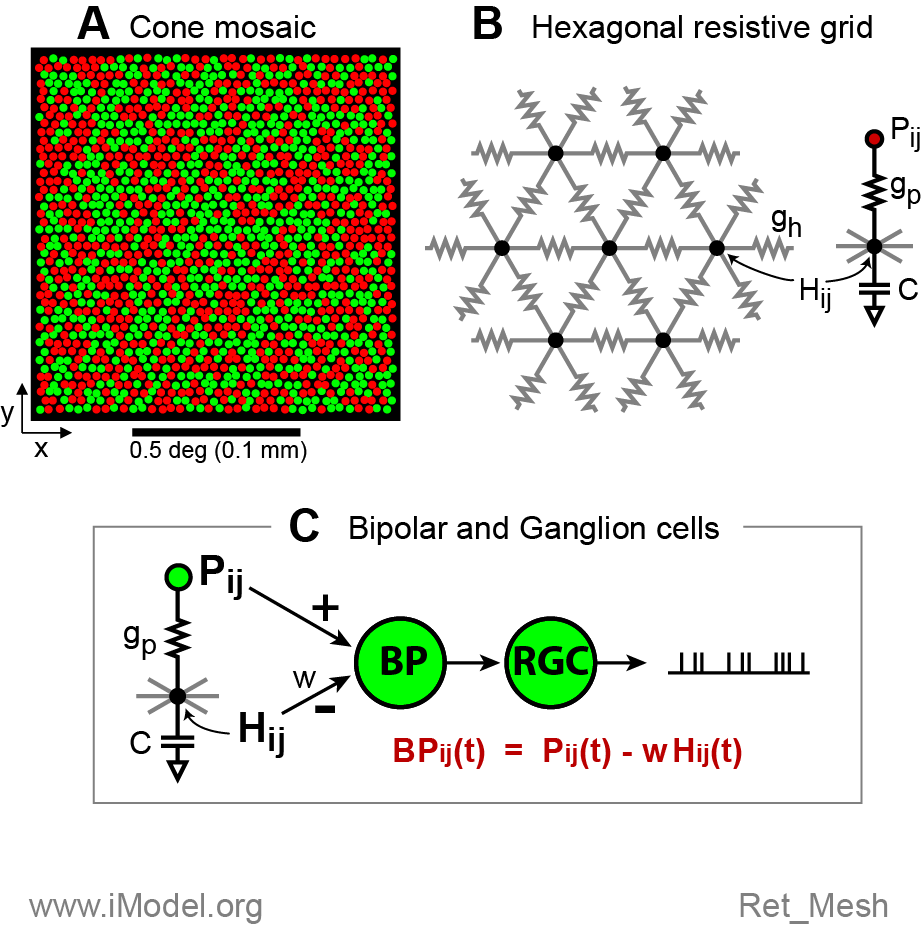
Ret_Mesh
ELC_V1_Simp
Variations
Ret_Mesh Ret_Mesh.0 Ret_Mesh.H2.0
Retina, Resistive Mesh

(B) The function of Horizontal cells is modeled as a resistive mesh where each conductance takes a value, gh. The signals from the cone photoreceptors are input to the mesh through conductances, gp. Each node has a capacitance, C, which plays a rold in determining the dynamics of the network. Pij and Hij are the values of the photoreceptor and horizontal cell signals, respectively.
(C) Bipolar (BP) and ganglion cell (RGC) signals are computed for each cone photoreceptor by simply subtracting the (weighted) value of H from P at each location (i,j). The BP signal is then converted to a spike rate to generate an inhomogeneous Poisson spike train, which represents the output of the RGC.